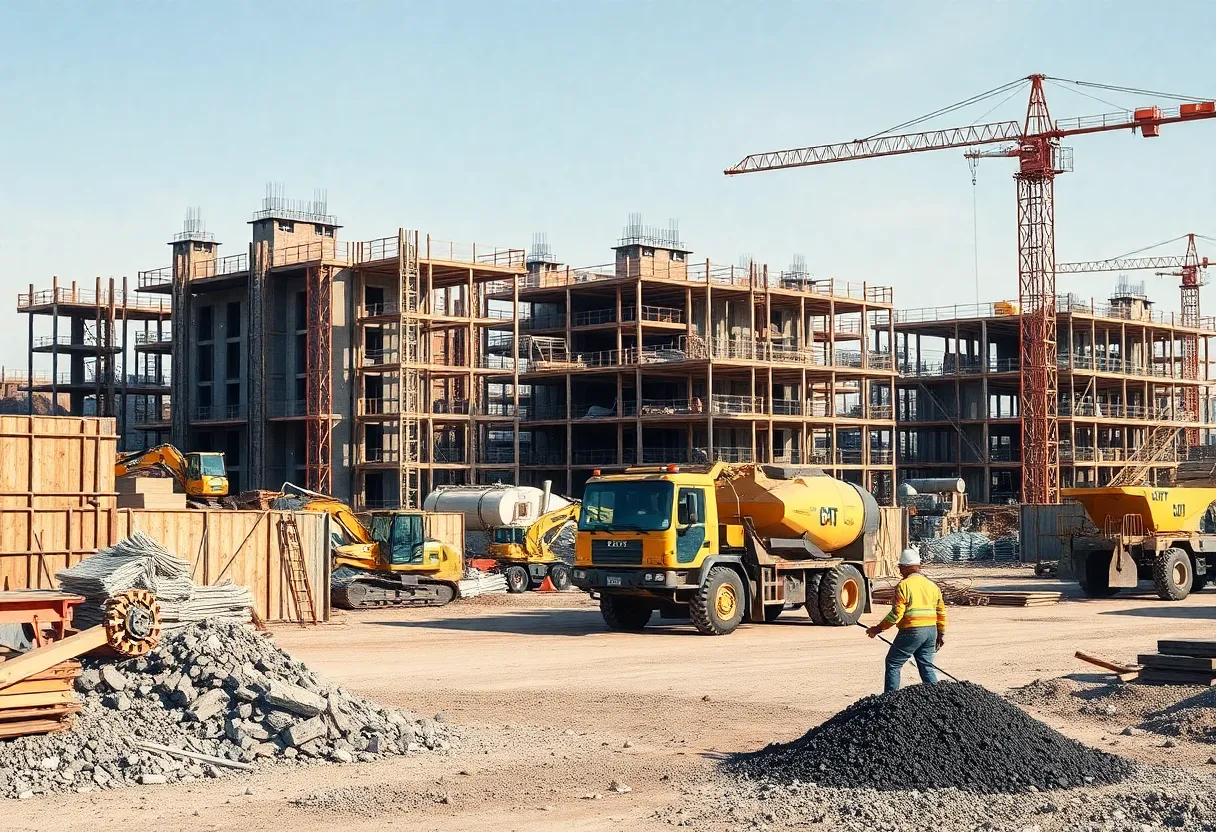News Summary
President Trump has signed significant tax reforms aimed at advancing the construction industry and critical minerals production. Key provisions restore tax incentives essential for contractors, including bonus depreciation and Section 179 expensing. Support from industry associations underscores the importance of financial planning and investment growth. Enhanced tax credits for research and development, along with new measures for energy-efficient building, signal a crucial shift. These reforms address longstanding challenges and aim to fortify market conditions, making it vital for construction firms to adapt and advocate for future incentives.
New Tax Reforms Provide Boost for Construction Industry
On July 4, 2025, President Donald Trump officially enacted a series of new tax provisions and extensions aimed at revitalizing the construction industry and enhancing the nation’s critical minerals production. This legislation, termed the Comprehensive Budget and Tax Act, is being recognized as a significant win for builders and contractors across the country.
Support from Key Industry Players
Leading organizations within the construction sector, including the Sheet Metal and Air Conditioning Contractors’ National Association (SMACNA) and the Associated Builders and Contractors (ABC), have voiced their support for this new law. The act aims to restore essential tax benefits that had expired, providing contractors with the financial tools they need to plan and execute upcoming projects more effectively.
Key Features of the Act
One of the highlighted aspects of the new law is the restoration of bonus depreciation and Section 179 expensing. These provisions are expected to encourage more investments in equipment and infrastructure as businesses can write off a significant portion of the cost in the year of purchase. Additionally, enhancements to tax credits related to the CHIPS Act and incentives for research and development (R&D) have also been included, fostering a more stable business climate for HVAC construction and its associated suppliers.
Contractors are now expected to benefit from immediate expensing for R&D costs, a significant advantage allowing them to recover expenses right away rather than over time. This direct financial relief gives a green light to innovation within the industry, as organizations can reinvest savings back into their operations.
Challenges and Ongoing Advocacy
Despite the positive developments brought by the Comprehensive Budget and Tax Act, industry leaders emphasize that further advocacy is necessary. There remains a pressing need for incentives aimed at promoting energy-efficient building practices. Supporters of the law are urging for a push toward additional reforms in the future that would bolster contractor competitiveness and ensure ongoing growth in the sector.
Both SMACNA and ABC have stressed the importance of maintaining tax credits for residential projects, some of which are slated to expire as early as 2025 or 2026. As these organizations monitor changes closely, contractors are encouraged to assess upcoming projects for potential eligibility to capitalize on the new benefits made available through the law.
Impact on Critical Minerals Production
The recent reforms also align with broader initiatives to boost domestic mineral production. Included in the enactments is a modification to the Internal Revenue Code’s Section 45X, which introduces tax credits for manufacturers involved in producing clean energy technology components. Notably, metallurgical coal has been added to the list of eligible critical minerals, thus qualifying for tax credits under this section.
Companies that produce metallurgical coal from 2026 to 2029 can receive a tax credit of 2.5% of their production costs. This incentive marks a significant step in promoting not only coal production but also American mineral production as a whole, aiming to propel our country towards self-sufficiency in critical materials.
In a progressive step, the OBBB phases down credits for other critical minerals starting at a 10% credit and gradually declining to zero by 2033. This structured approach ensures that while support is bolstered for newer energy initiatives, the transition toward a competitive mining landscape is carefully managed.
Conclusion
The Comprehensive Budget and Tax Act marks a transformative moment for the construction industry and critical minerals production, offering essential financial tools to promote growth and facilitate a forward-thinking approach. As industry associations strategize on maximizing the new benefits, there is a collective understanding of the need for ongoing legislative efforts to ensure long-term sustainability and growth in these vital sectors.
Deeper Dive: News & Info About This Topic
Additional Resources
Author: Construction CA News
The CALIFORNIA STAFF WRITER represents the experienced team at constructioncanews.com, your go-to source for actionable local news and information in California and beyond. Specializing in "news you can use," we cover essential topics like product reviews for personal and business needs, local business directories, politics, real estate trends, neighborhood insights, and state news affecting the area—with deep expertise drawn from years of dedicated reporting and strong community input, including local press releases and business updates. We deliver top reporting on high-value events such as the Rose Parade, Coachella, Comic-Con, and the California State Fair. Our coverage extends to key organizations like the California Building Industry Association and Associated General Contractors of California, plus leading businesses in technology and entertainment that power the local economy such as Apple and Alphabet. As part of the broader network, including constructionnynews.com, constructiontxnews.com, and constructionflnews.com, we provide comprehensive, credible insights into the dynamic landscape across multiple states.




